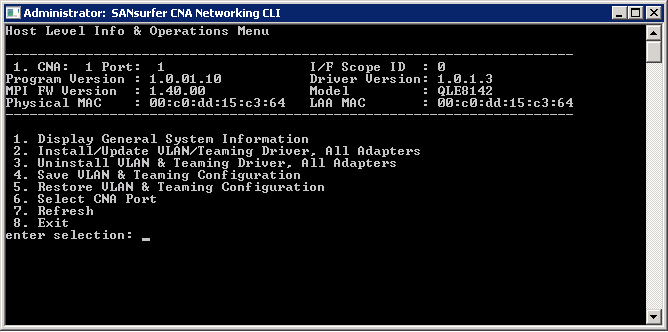QLogic 10Gb CNA for IBM System x and IBM Power : Connectivity Issues
I ran into an isse with a couple of X3650 M3 servers recently where after connetcing the Cisco TwinAx cables, linking the CNA’s to a Nexus 5000 switch, the cards did not seem to function properly:
- The SAN and LAN LED’s flashed at the same time, slowly. Looking at the product hardware manual this indicated the CNA did not have a connection!
- Ethernet connectivity appeared to work via one port but not the other
- The QLogic teaming utility was unreliable/unstable when configuring a network team using the CNA ports
- Once teamed, when disconnecting a single cable the team would not failover
- Disabling/enabling a port in Windows caused the system to become unresponsive
- The qlvt.exe applictaion kept hanging causing the system to be unresposive / hang on restart requiring a hard reset.
After rebuiling the OS on the servers, installing newer driovers (1.0.1.3) and the most recent firmware I eventually started to look further down the stack.

I eventually set my sights on the physical cables; using the following command we were able to identify the cable in use (it was at a remote site): sh interface e1/30 transceiver calibrations
Ethernet1/30
transceiver is present
type is SFP-H10GB-CU5M
name is CISCO-MOLEX
part number is 74752-9047
revision is 07
serial number is MOC15144945
nominal bitrate is 10300 MBit/sec
Link length supported for copper is 5 m
cisco id is —
cisco extended id number is 4
The part number relates to a passive 10GB TwinAx cable, note passive. After some more digging it was identified that the IBM card only supported active cables as identified in the supported IBM Cables here: http://www.redbooks.ibm.com/abstracts/tips0720.html
The cables have now been swapped for active cables and the issues above have all disappeared.
















